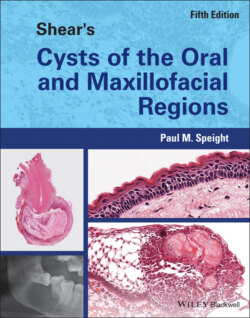Читать книгу Shear's Cysts of the Oral and Maxillofacial Regions - Paul M. Speight - Страница 50
Epithelial Proliferation
ОглавлениеThe stimuli for epithelial proliferation have been discussed previously, but in an established cyst LPS plays a less important role, and epithelial growth is sustained by cytokines and growth factors resulting from the inflammatory response (Table 3.2) (Bernardini et al. 2015 ; Silva et al. 2007 ; Lin et al. 2007 ; Nair 2004 ). However, as the cyst matures and inflammation subsides, the rate of cell proliferation may be relatively low. Soluk Tekkeşın et al. (2012a) showed that only about 1.0% of cells were positive for Ki‐67 in the epithelial lining of radicular cysts, compared to 2.0% or more in odontogenic keratocysts. They also found that radicular cysts showed higher levels of the pro‐apoptotic protein Bax and low levels of bcl‐2, suggesting that low levels of proliferation are accompanied by high levels of apoptosis. Others have identified apoptotic markers in radicular cysts and have suggested that this contributes to their slow growth (Loreto et al. 2013 ). As the cyst continues to expand, this slow proliferation and high levels of apoptosis probably lead to the thinning of the epithelial lining that is seen in long‐standing and residual cysts (Figure 3.11).
Figure 3.11 A long‐standing radicular cyst. The cyst wall has become fibrous with little inflammation and the epithelial lining is relatively thin and regular. Note the considerable cellular and proteinaceous debris in the lumen (top left).
